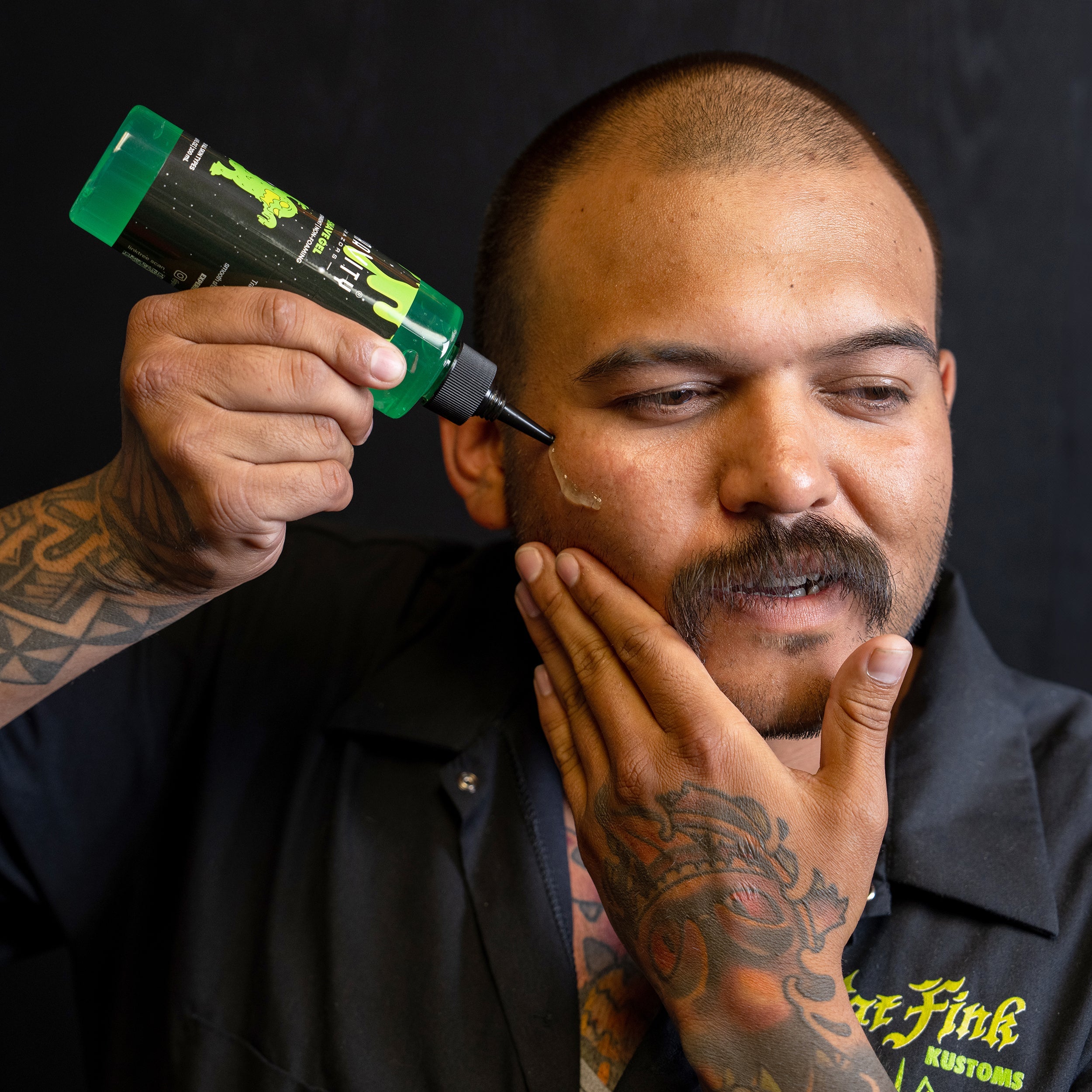Razor burn, nicks, and cuts—every shaver’s worst nightmare. Whether you’re a seasoned pro or a beginner, these pesky issues can quickly turn a smooth, satisfying shave into a painful experience. But is there a solution to these common shaving problems? Many people turn to shave gel as a way to achieve a closer, more comfortable shave. But does it actually help prevent razor burn and nicks? Let’s dive in and see if shave gel is the secret to a smoother, safer shave.
What is Razor Burn and Nicks?
Before we explore whether shave gel can help prevent razor burn and nicks, let’s first understand what causes these skin irritations.
-
Razor Burn: This refers to the red, irritated skin that appears after shaving, often accompanied by a burning sensation. It happens when the razor blade drags across the skin too aggressively, stripping away moisture and causing irritation. This is more likely to happen if you have dry skin, sensitive skin, or use a dull razor.
-
Nicks and Cuts: These occur when the razor blade accidentally slices the skin. It’s usually caused by either an over-exertion of pressure, an improperly sharp blade, or a lack of lubrication during the shave.
How Shave Gel Helps Prevent Razor Burn and Nicks
Shave gel plays a crucial role in creating a smooth and comfortable shaving experience. Here’s how it can help:
1. Provides Lubrication
One of the primary functions of shave gel is to create a smooth, slippery surface between your razor blade and your skin. The gel’s lubrication reduces friction, which is key to preventing the razor from dragging across your skin and causing irritation. Without enough lubrication, the razor may tug at the hair and skin, leading to redness and razor burn.
2. Hydrates the Skin
Many shave gels are designed with moisturizing ingredients that hydrate and nourish the skin during the shaving process. Well-moisturized skin is less prone to irritation, razor burn, and cuts, making it essential for a smoother shave. Hydrated skin is also more elastic, which helps prevent nicks caused by a dry razor dragging across the surface.
3. Softens Hair
Shave gel works by softening the hair, making it easier for the razor to cut through with minimal resistance. Softer hair is less likely to cause the razor to tug or pull at your skin, which can result in nicks and irritation.
4. Protects Sensitive Skin
For those with sensitive skin, many shave gels are formulated with soothing ingredients like aloe vera, chamomile, or vitamin E. These ingredients have anti-inflammatory and calming properties that help reduce the risk of razor burn and irritation.
5. Allows for Better Control
Unlike shaving foam, which can be harder to see and control, shave gel usually has a clear or translucent texture that lets you monitor where you’re shaving. This visibility helps reduce the chances of cutting yourself and ensures you’re taking your time for a smoother, more controlled shave.
Choosing the Right Shave Gel for Razor Burn and Nicks
Not all shave gels are created equal, so it’s important to pick one that works best for your skin type and shaving needs. Here are a few tips to help you choose:
- Look for Moisturizing Ingredients: If you have dry skin, choose a shave gel with hydrating ingredients like glycerin, aloe vera, or shea butter.
- Choose Fragrance-Free Options for Sensitive Skin: Fragrances can irritate sensitive skin, so opt for a shave gel that is free from artificial scents.
- Consider Gel with Soothing Additives: Ingredients like aloe vera, chamomile, or tea tree oil can help calm irritation and reduce the chances of razor burn.
How to Use Shave Gel to Prevent Razor Burn and Nicks
To get the most out of your shave gel and prevent razor burn, follow these tips:
- Prep Your Skin Properly: Before applying the shave gel, wash your face or legs with warm water to open your pores and soften your hair.
- Apply Shave Gel Generously: Use a generous amount of shave gel, ensuring an even layer over the area you plan to shave.
- Use a Sharp Razor: A dull razor blade can cause tugging and pulling, leading to nicks and razor burn. Always use a sharp, clean razor for the best results.
- Shave with Light Pressure: Let the razor do the work—avoid pressing too hard. Gently glide the razor in the direction of hair growth to minimize irritation.
- Aftercare: After shaving, rinse your skin with cool water to close your pores, and apply an alcohol-free aftershave or moisturizer to keep your skin hydrated.
Additional Tips to Prevent Razor Burn and Nicks
- Shave after a warm shower: The warm water will soften the hair and open up your pores, making shaving easier and more effective.
- Avoid shaving dry skin: Shaving without any product or water can lead to irritation. Always use shaving gel, cream, or foam.
- Shave in short strokes: Longer strokes can increase the likelihood of pulling at the skin, which can lead to cuts or burns.
- Don’t rush: Take your time to avoid accidentally nicking yourself. Shaving too quickly can result in uneven strokes and irritation.
Shave gel is more than just a slippery substance to put between your razor and skin. It can be a game-changer when it comes to preventing razor burn and nicks, offering both hydration and protection. By choosing the right shave gel for your skin type, using it correctly, and following proper shaving techniques, you can enjoy a smoother, more comfortable shave and say goodbye to irritation and cuts. So next time you shave, don’t skimp on the shave gel—it might just be the secret to a perfect, pain-free shave.
